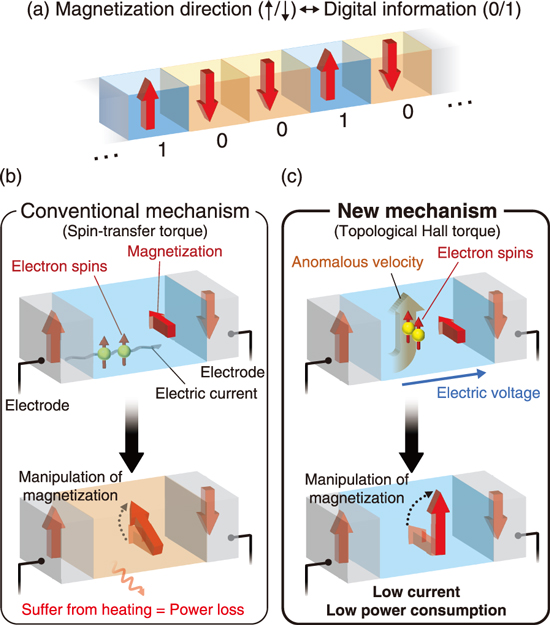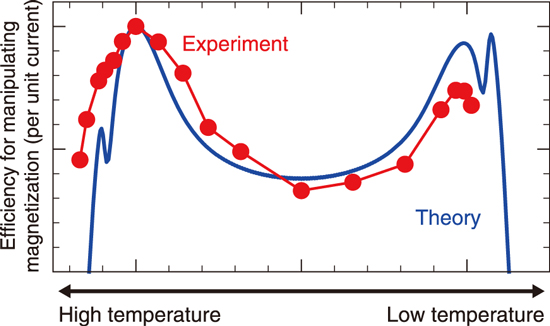
Fig.3-8 Schematic depictions of the manipulation of magnets

Fig.3-9 Experimental verification of our new principle
Magnetic memories store information by associating a binary number (0 or 1) with the magnetization direction (for the north or south pole, respectively) (Fig.3-8(a)). Developing magnetic memories with higher operation speed and denser integrability requires us to reduce the electric power consumption in manipulating magnetization within nanometer-size domains. For this purpose, the technique called “spin-transfer torque (STT)”, which uses an electric current, has been commonly used for about a decade (Fig.3-8(b)). However, current injection in metals causes Joule heating because of the electric resistivity. To solve this crucial problem, we performed theoretical and experimental studies and discovered a new mechanism to manipulate magnetization with remarkably lower power consumption.
The key to this power-saving mechanism is “topology”. Topology is the character of the quantum-mechanical structure of electrons in materials. When an electric voltage is applied, an electron with a topological structure moves perpendicular to the voltage. This behavior, known as the “anomalous velocity”, is unaffected by the electric resistivity. In our theoretical work, we discovered a new mechanism for manipulating magnetization with lower power consumption by making use of the anomalous velocity. We coined the term the topological Hall torque (THT) for this mechanism (Fig.3-8(c)). Compared to the conventional STT, the THT requires only about 1/100 times smaller electric current for manipulating the magnetization. This means that the THT can drastically reduce the electric power consumption by a factor of 1/10,000.
We verified our theoretical proposal of the THT by the experimental measurement of a metallic ferromagnet, SrRuO3. We injected an electric current and observed the manipulation of magnetization at various temperatures. The efficiency of manipulating magnetization per unit current was so large that the theoretical estimation from the conventional STT cannot be applied. Moreover, a temperature-dependent two-peak structure was observed. Through model calculation, we clarified that both the magnitude and temperature dependence of the measured efficiency can be explained in terms of the THT (Fig.3-9). The THT in this system is described by the topological structure known as “Weyl points” in the electronic bands of SrRuO3.
Our new findings of the THT indicate a decisive role of topology in the manipulation of magnets. By selecting and designing materials with a strong topological structure, our idea can help develop future magnetic memories with remarkably less power consumption.
These works were partially supported by JSPS KAKENHI Grant-in-Aid for Scientific Research (S) (JP19H05622) and the Leading Initiative for Excellent Young Researchers.
(Yasufumi Araki)